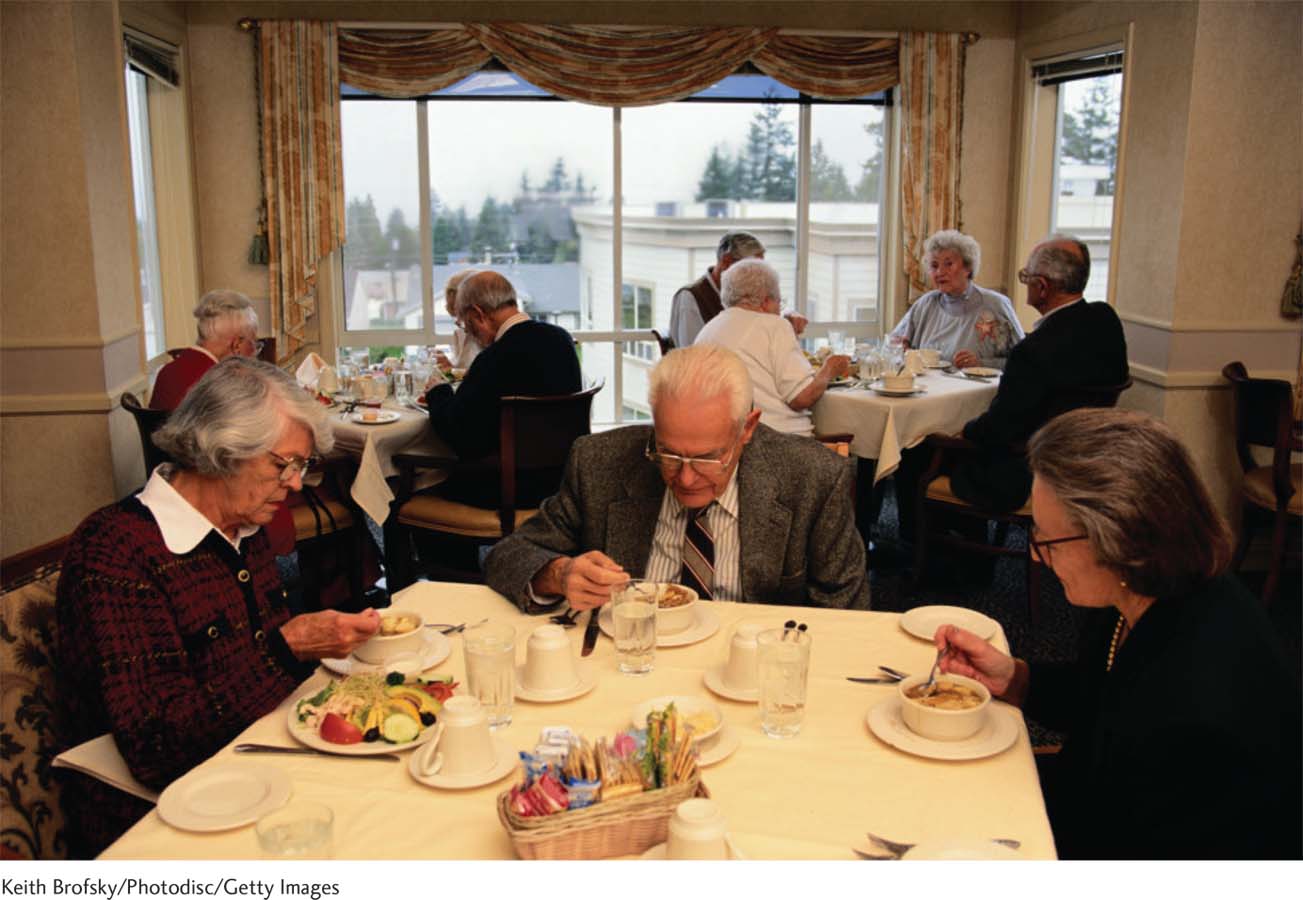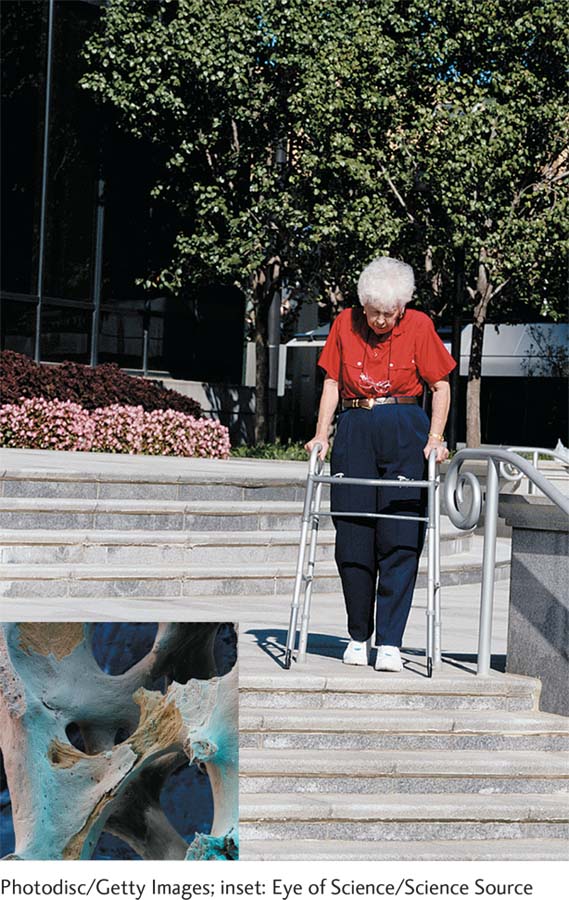14.4 Options and Services for the Frail Elderly
Imagine you are in your seventies, and cooking and cleaning are difficult. You have trouble walking to the mailbox or getting from your car to the store. You start out by using selection and optimization. You focus on your most essential activities. You spend more time on each important life task. You are determined to live independently for as long as possible. But you know that the time is coming when you will enter Baltes’s full-
Setting the Context: Scanning the Global Elder-
For most of human history, older people would never confront this challenge. Families lived in multigenerational households. When the oldest generation needed help, caregivers were right on the scene.
Today, however, this support network is fraying in some of the collectivist countries historically most committed to family care (Qu, 2014). In affluent Japan, nursing home care is becoming common. In China, young people have rapidly adopted Western individualistic lifestyles, as they move from the villages to the cities to find work. The government’s one child policy in particular has left Chinese elderly fearful of what will happen when they need old-
The Scandinavian countries offer some of our best examples of the elder care advanced Western societies can provide (Rodrigues & Schmidt, 2010). In Sweden, Norway, and Denmark, government-
439
Alternatives to Institutions in the United States
In the United States, we do have these worries. The reason is that Medicare, the U.S. health insurance system for the elderly, pays only for services defined as cure-
What choices do older people in the United States and other developed nations have instead of going to a nursing home? Here are the main alternatives to institutionalization that exist today:
A continuing-
care retirement community is a residential complex that provides different levels of services from independent apartments to nursing home care. Continuing care provides the ultimate person– environment fit. Residents arrive in relatively good health and then get the appropriate type of care as their physical needs change. With this type of housing, older adults are purchasing peace of mind. They know where they will be going if and when they need nursing home care. An assisted-
living facility is designed for people who have ADL limitations, but not impairments that require full- time, 24- hour care. Assisted living— which has mushroomed in popularity— offers care in a less medicalized, homey setting. Residents often have private rooms with their own furniture. These settings do not have the overtones of an institutional “old- age home” (Phillips & Hawes, 2005; Yamasaki & Sharf, 2011). Day-
care programs are specifically for older people who live with their families. Much like its namesake for children, adult day- care provides activities and a place for an impaired older person to go when family members are at work. Because this service allows relatives to care for a frail parent at home without having to give up their other responsibilities— day care puts off the need for a nursing home (Cho, Zarit, & Chiriboga, 2009). Home health services help people age “in place” (at home). Paid caregivers come to the house to cook, clean, and help the older adult with personal care activities such as bathing.
With their enriching activities and services and social contacts, assisted-

One reason is that leaving home means shedding one’s prized possessions, robbing people of the identity and memories attached to “real life” (Wiles and others, 2012). Moving can activate fears of losing privacy (Crisp and others, 2013). Yes, you won’t have the scary experience of struggling to make it all alone, but you still can feel lonely, especially since you may confront the same poisonous group-
Most important, in the United States, older people only have the option of moving to continuing care if they are wealthy—
Nursing Home Care
440

Nursing homes, or long-
What causes people to enter nursing homes? Often, a person arrives after some incapacitating event, such as breaking a hip. Given that these diseases require such daunting 24/7 care, roughly half of the nursing home population has some neurocognitive disorder such as Alzheimer’s disease.
In predicting who ends up in a nursing home, both nature and nurture forces are involved. Yes, the person’s biology (or physical state) does matter. But so does the environment: specifically, whether a network of attachment figures is available to provide care. Does the older adult have several family members and/or a friend willing to take the person in? The more places (and people) a frail person has “in reserve” to provide help, the lower the risk of that individual’s landing in long-
Just as the routes by which people arrive differ, residents take different paths once they enter nursing homes. Sometimes, a nursing home is a short stop before returning home. Or it may be a short interlude before death. Some residents live for years in long-
You might be surprised to learn who is paying for these residents’ care in the United States. Because people start out paying the costs out of their own pockets and “spend down” until they are impoverished, Medicaid, the U.S. health-
Evaluating Nursing Homes
Nursing homes are often viewed as dumping grounds where residents are abused or left to languish unattended until they die. How accurate are these stereotypes?
Many times, the generalizations are unfair. Nursing homes may offer perks from beauty parlors to private rooms. Residents often appreciate their newfound feelings of safety after moving (Nakrem and others, 2013). A strong movement is afoot to make nursing homes homey and “person centered,” just as any other retirement home (Bishop & Stone, 2014).
We still have far to go. In one poll, more than one-
It’s also difficult to erase the efficacy-
441
My discussion brings up the front-
Still, even some highly experienced nurses gravitate to this “low status” work. As one Swedish nurse explained: “Your relationship with the patients is completely different when you see them for years. . . . As a new nurse, your focus is on medical and technical skills. But, elderly care is so much more” (adapted from Carlson and others, 2014, pp. 764–
At first I was put off by the smells. . . . Then I got moved to the Alzheimer’s unit . . . and I found this to be like . . . the best task I ever had. . . . If you just come in here and say, “Okay, I got a job to do and I’m just doing my job,” . . . then you’re in the wrong field. . . . When somebody here dies, we all talk, we say how much we miss the person. . . . Some of them cry. . . . Some of them go to their funerals. . . . I actually spoke at some of the funerals. . . . I say how much this person meant to me.
(quoted in Black & Rubinstein, 2005, pp. S-
For Jayson, who—
Experiencing the Lifespan: Getting It Together in the Nursing Home
A few years ago, I attended an unforgettable memorial service at a Florida nursing home. Person after person rose to eulogize this woman, a passionate advocate who had worked with immense self-
If you think that this story of emotional growth is unique, listen to this friend of mine, a psychologist who, like Jayson, finds her generativity in nursing home work:
My most amazing success entered treatment two years ago. This severely depressed resident had had an abusive marriage and suffered from enduring feelings of powerlessness and low self-
So then she decided to work on becoming closer to her children. She had been aloof as a mother, and she told me that once her younger child had asked her to say that she loved her and she couldn’t get the words out. Now, at age 89, she called this daughter, told her that she did love her and that she was sorry she couldn’t say it before. Her daughters said that I had presented them with a miracle, the loving mother they always wanted. My patient made friends on the floor and became active in the residents’ council. In the time we saw one another she used to tell me, “I never believed I could change at this age.”
As she finished her story, my friend’s eyes filled with tears: “My patient died a few months ago, and I still miss her so much.”
A Few Concluding Thoughts
442
Dealing with ADL impairments is a vital social challenge facing our rapidly aging world. As you now know, we can’t count on science to magically cure the disabilities inherent to surviving beyond our “expiration date.” We need to prepare for our looming baby-
Our personal challenge, as you learned in these later-
In the next chapter, I’ll continue this theme of inner development and also stress the crucial importance of making connections with loved ones as I focus directly on life’s endpoint—
Tying It All Together
Question 14.13
You are a geriatric counselor, and an 85-
is affluent, worried about living alone, and has no ADL problems.
has ADL impairments and is living with her family—
who want to continue to care for her at home. has instrumental ADL impairments (but can perform basic self-
care activities), can no longer live alone, and has a good amount of money. has basic ADL impairments.
is beginning to have ADL impairments, lives alone, and has very little money (but does not qualify for Medicaid).
a continuing-
care retirement facility an assisted-
living facility a day-
care program a nursing home
There are no good alternatives you can suggest; people in this situation must struggle to cope at home.
a, 1; b, 3; c, 2; d, 4; e, 5
Question 14.14
Joey and Jane realize that their mother needs to go a nursing home. Which two likely comments can you make about this mother’s situation—
No one in the family is available to take their mom in.
Medicare will completely cover their mom’s expenses.
The quality of the facilities to which their mom will go may vary greatly.
The staff at their mom’s nursing home will almost always hate their jobs.
a and c
Question 14.15
Devise some creative strategies to care for the frail elderly in their homes.
Here, you can use your own creativity. My suggestions: (1) Institute a program whereby people get cash incentives to care for frail elders in their homes. (2) Build small, intergenerational living communities, with a centrally located home option specifically for the frail elderly. Residents who buy houses here would commit to taking care of the older adults in their midst. (3) Set up a Craigslist-